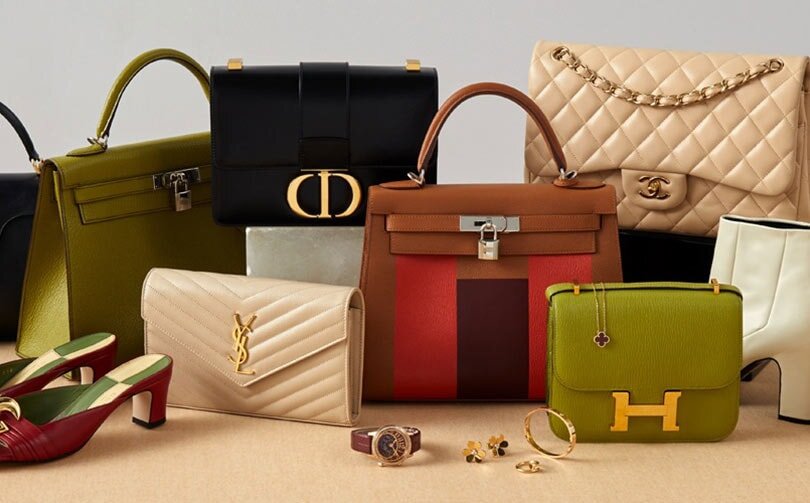Can Pre-Loved Clothes Save the Earth?
Thrifting and shopping pre-loved clothing has become the talk of the town, and it doesn’t seem to fade away anytime soon. Is it because of the well-aired message of pollution and textile waste that spurred such a craze for pre-owned clothes? Or was it the cool factor of exclusive, vintage tees that donned the bodies of celebrities and influencers? Hint: it’s all of them, and more. It’s the current generation’s answer to showcasing individuality against mass-produced fast fashion, and doing their part to decrease the world’s collective carbon footprint.
Beginning of the Shift to Thrift
Thrift stores and resale platforms make up the two major categories of the second-hand clothing market. As mentioned in our last post regarding sustainability milestones, hippies are known to popularize thrifted clothing in the 1970s, but it wasn’t until the last decade that the movement began to take the world by storm. Still, there’s a negative connotation regarding thrifted items being grimy, worn and torn that prevents people from shopping pre-loved items. Fortunately, that perception is slowly but definitely changing, much thanks to social media, resale apps and online consignment stores.
The second-hand clothing phenomenon is more evident amongst millennials and Gen Z, due to the proliferation of apps and platforms for second-hand shopping. Social media and fashion influencers also helped to make thrifting a trend, as contents on such topics would rack up millions of views. Search “thrifting” or “second-hand shopping” or any related phrases on Youtube, and you’ll find never-ending thumbnails of teens, 20-somethings rummaging through rows of clothes. A trend of “thrift flipping” – upcycling thrifted items into something new – has also emerged, riding along the wave of the thrift trends.
The Unstoppable Rise
As reported by industry experts, the thrifting space is set to soar. In the last three years, the resale market has grown at 21x the pace of mainstream apparel retailers. According to ThredUp, a notable online consignment and thrift store, the second-hand market is projected to grow to almost twice the size of fast fashion retailers by 2029 (reaching a market value of $80 billion). Over the years, more brick-and-mortar fashion retailers are jumping onboard the consignment bandwagon, from partnerships with resale companies, offering of recycling and resale services, etc.
It is prudent for conventional fashion retailers to hop on to the resale scene, as the overall fashion market is experiencing a shift that favors the thrifting sector. ThredUp reports that the retail sector for apparel is expected to shrink 15% between 2019 and 2021 (reaching a market value of $334 billion), whereas the online secondhand component is expected to grow by 69% during the same period (reaching a market value of $12 billion).
When the Covid-19 crisis hit, it caused a worldwide economic crisis that prompted consumers to rethink the way they spend on non-essential items like clothing. Fast fashion retailers experienced dips during Covid, touted the “Covid Retail Slump”; while resellers saw increased website activity during lockdown periods. The Covid incurred financial crisis saw more consumers clearing out their closets, and putting them up on sale on consignment or thrift sites as a way to both make extra money and to make more room in their closets. For shoppers, the ongoing economic decline, lockdown-induced boredom, combined with the increased interest in sustainability has proven to be a winning combination. Thrift shopping doesn’t only fill the void in their closets at an affordable price, but also provides entertainment and value while being eco-conscious.
Luxury goods are also getting a new lease of life in the second-hand market, and demands for it are just as substantial. Discontent with regular price hikes on luxury items, shoppers turn to consignment marketplaces like The RealReal or the Vestiaire Collective for authenticated luxury goods. Based on a survey conducted on 1000 Vestaire Collective’s clients, 96% said that they are looking for the best value for money by shopping pre-owned luxury pieces; and over 70% of millennial and Gen Z respondents say that environmental impact is their primary concern while shopping, which motivates them to shop ethically. Limited edition releases from high fashion brands (which may no longer be available in the firsthand market) find their way into consignment sites, and are much more coveted for their scarcity. Driven by accessibility, collectability, and affordability, the market value of the pre-loved luxury sector reached $2 billion in 2019.
Making a Difference
Consumers are getting increasingly aware of the ecological impact of the apparel and textile industry. Online searches for “sustainable fashion” more than tripled since 2016. Millennials and Gen Z are rather discerning shoppers, and often look for products that aren’t just of good quality, but also one that aligns with their personal social and environmental values. Consumers' demands for fast fashion retailers to expand their commitment to sustainability either aren’t met, or put on hold, or aren’t fast enough. So what do underwhelmed shoppers do when their demands aren’t met and they need to purchase a piece (or more) of clothing? The answer to the conundrum is buying second-hand fashion.
A survey of 1500 consumers in 17 cities revealed that 47% of internet users worldwide had ditched products and services from a brand that violated their personal values. Among the list of reasons consumers switched, protecting the environment came out on top, with 5% cited their concerns regarding climate change. Another research conducted by Kearney found that 58% of GenZ internet users are looking for eco-friendly packaging for their purchases, and 57% are seeking environmentally sustainable products. Unfortunately, GenZ-ers are generally cash-strapped and lack spending power, thus only 38% were willing to pay more for those sustainable options. Therefore they turn to thrifting and second-hand shopping.
Aside from the low environmental impact factor and affordable price, pre-owned pieces offer some kind of flexibility for frequent turnover of wardrobes. Especially among the so-called “Instagram generation”, no one wants to be caught wearing the same outfit twice, and thrift stores become a source of unique, one-of-a-kind apparels at a bargain price. As the sustainable fashion movement grows, thrifting is the way to go for fashionistas and influencers to satisfy their fashion fix without purchasing anything brand new.
Keeping usable clothes in cycle is imperative to achieve a circular economy, as textile waste is reduced, and less resources are used. By extending the life of a garment as much as possible, in theory you save other resources from being tapped to create new items. Buying a used piece of clothing can reduce its carbon footprint by 82%.
While it is certainly applaudable that there is an increasing number of eco-conscious shoppers, we still have an incredibly long way to go in terms of a sustainable, circular fashion industry. Changing deep-rooted mindsets – of extravagant shopping habits, throwaway cultures, stigmas around repeating outfits etc – is never easy. For Andrea Speranza, Head of Campaigns at textile reuse charity TRAID, the solution is twofold: “The first thing we need is more awareness of the negative impacts that fast fashion is having on the planet, and secondly we need to make the other alternatives, such as second-hand clothing and clothes hiring, as simple and as appealing as possible.”
Campaigns highlighting the darker side of fashion production, be it the social or environmental implications they have, is crucial to help consumers make informed decisions when it comes to clothes shopping. Awareness about the ecological consequences of fashion are more widespread in recent years, thanks to social media and the growth of sustainable brands which are transparent about their manufacturing process.
The great news is, second-hand shopping has never been easier. Digitization has given birth to a plethora of second-hand shopping apps that we all know and love today, namely Poshmark, Depop, ThredUp, The RealReal, and countless others. We could browse any pre-owned item, anytime and anywhere, right on our fingertips. Hence, shopping responsibly, and at a lower monetary and ecological cost is no longer a far-fetched ideal. Normalizing second-hand garments may well be the way forward.
So, to answer the question of whether thrifting and purchasing pre-loved can save the world? In short, yes, eventually with time and continued effort.
Still, it shouldn’t be a trend to be ethical and live sustainably, but rather, it should be a lifestyle. The act of purchasing items is synonymous with casting votes, eg: supporting a sustainable brand or buying from a thrift store could steer the direction in which the fashion industry will take in the future. Buying is more than just a transaction: it’s a chance to make an impact, to change the narrative.
At 4tify, our product development journey is driven by our values of sustainability, transparency, and innovation. If you share the same values as we do, slide us a message and we’ll see how we can work together!








